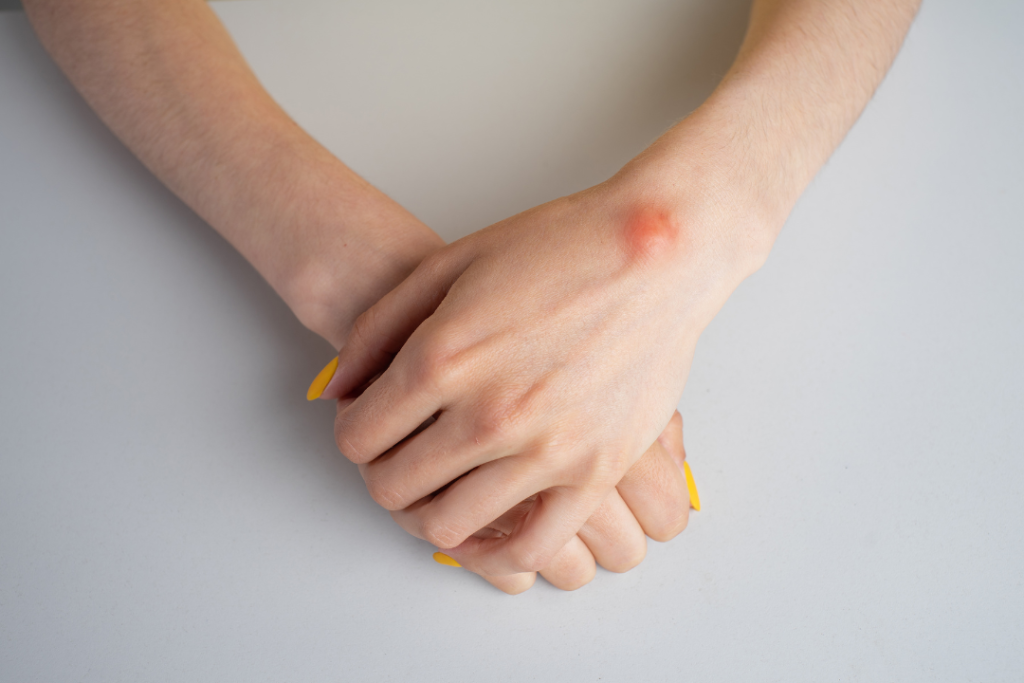
Is This a Lipoma or Something More? When to See a Surgeon
Finding a lump under your skin can be unsettling. For many patients, that lump turns out to be a lipoma — a common, benign growth made of fatty tissue. Lipomas aren’t usually dangerous, but they can raise understandable concern, especially if they grow, become uncomfortable, or simply don’t disappear. Many people wonder, will a lipoma go away on its own or if medical treatment is necessary.
At Surgical Associates, our surgeons help patients understand these types of soft-tissue growths, confirm accurate diagnoses, and provide reassurance when surgery may or may not be needed.
Understanding What a Lipoma Is
A lipoma is a slow-growing lump of fat that develops just beneath the skin. Most are soft to the touch, move easily when pressed, and cause no pain. They often appear on the shoulders, neck, arms, or back but can occur almost anywhere on the body.
Lipomas can range from small, pea-sized nodules to larger growths several inches wide. They are made up of normal fat cells enclosed in a thin capsule, which is why the body doesn’t typically absorb them on its own. Though not cancerous, it’s still wise to have any new lump examined by a qualified healthcare provider.
How Common Are Lipomas?
Lipomas are the most frequent benign soft-tissue tumors in adults. They tend to appear between ages 40 and 60, though anyone can develop one. Some people have a single lump, while others may develop several over time, especially if there’s a family history of similar growths.
The exact cause remains unclear, though genetics often play a role. In rare inherited conditions, multiple lipomas may appear across different areas of the body.
Can a Lipoma Disappear Without Treatment?
Patients frequently ask, will a lipoma go away without surgery or medication. Unfortunately, the answer is no. Once a lipoma forms, it rarely shrinks or disappears naturally. Because it’s a cluster of fat cells surrounded by fibrous tissue, the body cannot break it down the way it would with other temporary swellings or cysts.
While some small lipomas may remain unchanged for years, others slowly enlarge. Home remedies, massage, or dietary changes don’t make them recede. Surgical removal remains the only reliable way to eliminate one permanently.
When to Schedule a Medical Evaluation
Although lipomas are benign, they shouldn’t be ignored. You should see a surgeon if you notice:
• Rapid growth or a sudden change in size
• Pain, tenderness, or restricted movement
• Firmness or a lump that feels fixed in place
• Discomfort with clothing or physical activity
• Uncertainty about the diagnosis
A surgeon can determine whether the mass truly is a lipoma or a more serious condition such as a liposarcoma — a rare cancer that can mimic benign fatty tumors. Liposarcomas are typically firm, immobile, and may grow faster than a typical lipoma.
How Lipomas Are Diagnosed
During an examination, your surgeon will assess the lump’s size, texture, and mobility. In some cases, imaging or testing helps confirm the diagnosis:
• Ultrasound can reveal whether the lump is made of fatty tissue.
• MRI or CT scans provide detailed information about deeper or larger growths.
• Biopsy may be performed if the doctor suspects another type of tumor.
These tests ensure that each patient receives a precise diagnosis before discussing treatment options.
Surgical Removal and What to Expect
If the lipoma causes pain, limits movement, or simply causes frustration, removal may be recommended. At Surgical Associates, our surgeons perform minimally invasive outpatient procedures under local anesthesia. Through a small incision, the fatty tissue is gently removed, and the area is closed with sutures.
Patients typically return home the same day and can resume light activity within a few days. The removed tissue is always sent for laboratory analysis to confirm that it’s benign. Once removed, the same lipoma does not grow back in that area.
Will It Return After Surgery?
It’s natural to ask, will a lipoma go away for good after removal. In most cases, yes. Once it’s surgically excised, it’s gone permanently. However, people who are prone to developing lipomas may notice new ones in other areas later on. Those new lumps are not recurrences but separate growths.
Regular self-checks and periodic medical exams are the best ways to monitor for new changes.
When Lipomas Affect Daily Life
Even though lipomas are harmless, they can interfere with comfort or confidence. A visible lump can make clothing fit awkwardly or cause self-consciousness. For others, a larger growth might limit movement or cause discomfort during exercise.
In these cases, removal isn’t just cosmetic — it’s part of improving daily quality of life. Many patients feel immediate relief once the mass is gone.
Why Professional Care Matters
It can be tempting to ignore a small lump or assume it’s nothing serious, but professional evaluation is the only way to be certain. Other conditions — such as cysts, swollen lymph nodes, or soft-tissue tumors — can look similar to lipomas.
Organizations such as the American College of Surgeons and the National Institutes of Health stress that any new or changing lump should be checked by a qualified healthcare provider (ACS, NIH).
Expert Surgical Care Close to Home
If you’ve noticed a lump and wondered, will a lipoma go away, remember that while these fatty growths are generally harmless, they rarely resolve on their own. Surgical removal is straightforward, safe, and often life-improving.
At Surgical Associates, our team provides expert diagnosis and minimally invasive treatment in a comfortable, patient-centered environment. Contact Surgical Associates today to schedule your consultation and learn more about your options for lipoma evaluation and removal.